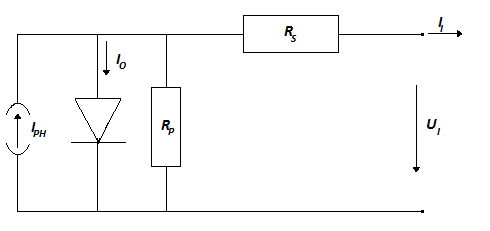
- Solar Energy - Introduction
- Solar Energy - Photovoltaic Effect
- Developing Solar Panel
- Solar Energy - Cell Efficiency
- Types of Photovoltaics
- Geothermal Energy
- Geothermal Energy - Introduction
- Geothermal Energy - Extraction
- Geothermal Energy - Geophysics
- Hydroelectric Power
- Hydroelectric Power - Introduction
- Hydroelectric Power - Turbine Types
- Hydroelectric Power Systems
- Hydraulic Ram Pump
- Renewable Energy Resources
- Renewable Energy - Quick Guide
- Renewable Energy - Resources
- Renewable Energy - Discussion
Solar Energy - Types of Photovoltaics
The Photovoltaic technology utilizes two technologies; crystalline form and the amorphous silicon. The amorphous is still a new exploration and may take longer to achieve optimal performance.
Crystalline cells
The crystalline silicon technology gives two types of photovoltaic cells −
-
Mono-crystalline cells − Mono-crystalline solar cell is constructed from a single crystal cylinder sliced off to produce all the wafers in the array. The wafers are circular in shape, though at times they may be cut into other shape variations for crystal utility purposes. It is characterized by a uniform blue color. Other features include −
Relatively high efficiency, among all PV technologies, available today.
Most expensive cells because it is developed from purely same crystal.
The cells are rigid and have to be well positioned and mounted on a rigid backing.
-
Poly-crystalline cells − These are also known as malty-crystalline cells and are made by casting the silicon into a square mould. The resulting cast is then cut into a number of square wafers. The square block is made up of several crystals composed of arrays of blue variations. This is the technology behind the glittery, gemstone-like surface of some solar panels in the market today. Poly-crystalline cells have distinct features including −
Slightly less efficient compared to mono-crystalline cells.
Cheaper than mono-crystalline.
Less waste of material (purified silicon).
Given solar panels of same specification, the poly-crystalline panel is slightly wider than the mono-crystalline counterpart.
Amorphous Cells
Thin-Film PVs − The use of amorphous form of silicon to make photovoltaic cells is a new technique that the experts are still researching to curb the challenges of the crystalline forms. The characteristics of this technology include −
They are much cheaper than both the crystalline forms.
They are flexible. Thus, they should have a movable mounting to best utilize this feature. However, the shape of the surface should accommodate the panel for safety purposes.
Less susceptible to power loss due to shedding of cells. In addition, they are more powerful at a dimly lit environment.
Less durable. They gradually degenerate in terms of power production especially for the first month before gaining stability.
Least efficient in power production and therefore covers larger space
The new technology makes it possible for the panel to be mounted on windowpanes and curved surfaces.
Photovoltaic Circuit Properties
An equivalent circuit of a photovoltaic cell is given below −

Current obtained, Iph = Area of cell * Intensity of light, H * response factor, ξ.
Given, Loss due to resistance by conductor = Rp
Loss due to non-ideal conductors = Rs
If the cell produces current I at a voltage V, then, The relationship between I and U of a single cell is expressed as −
Current, $I\:=\:I_{ph}-I_{o}[\exp\lgroup\frac{\lgroup U_{cell}+I_{cell}R_{s}\rgroup}{U_{t}}-1\rgroup]-\frac{\lgroup U_{cell}+I_{cell}R_{s} \rgroup}{R_{p}}$
Where thermal voltage is given by $U_{t}\:=\:\frac{qkT}{e}$
Temperature is in Kelvin and K = 1.38-23(Bowmans const), e = 1.602e-19.
Getting maximum I and U, we can obtain maximum power.
Imax is obtained when V = 0 i.e. short circuit while Vmax is obtained when I = 0 i.e. open circuit.
Note − Cells in parallel add current while cells in series add up voltage.